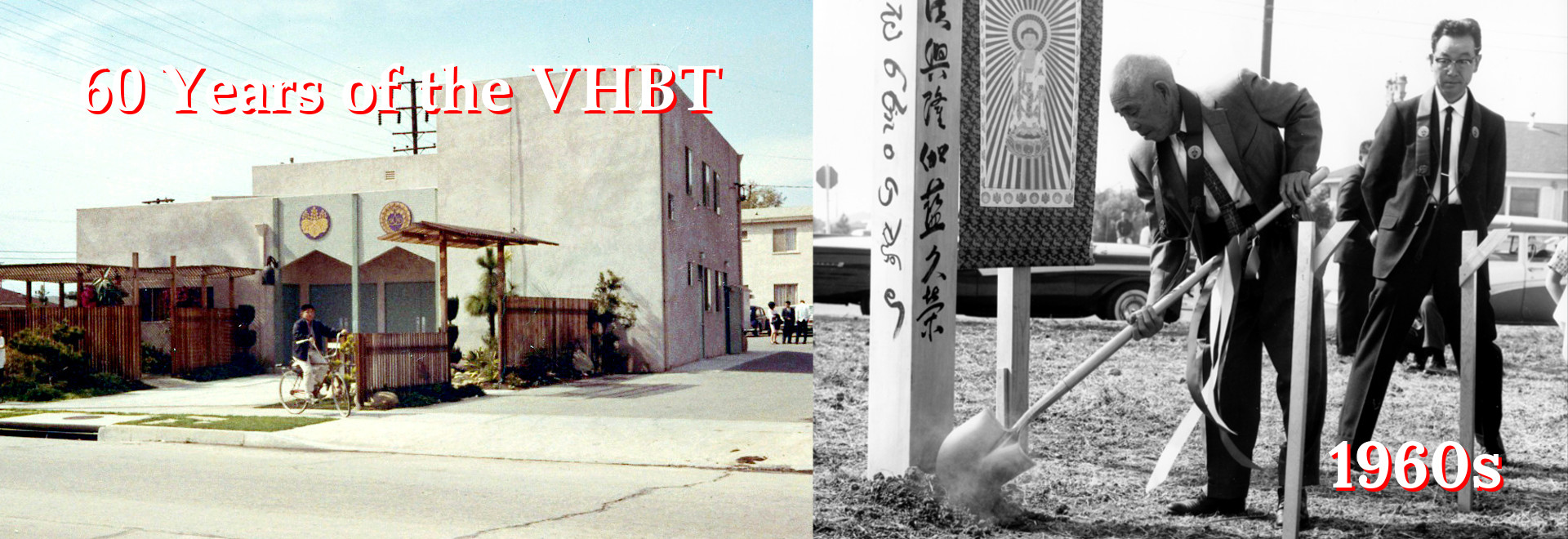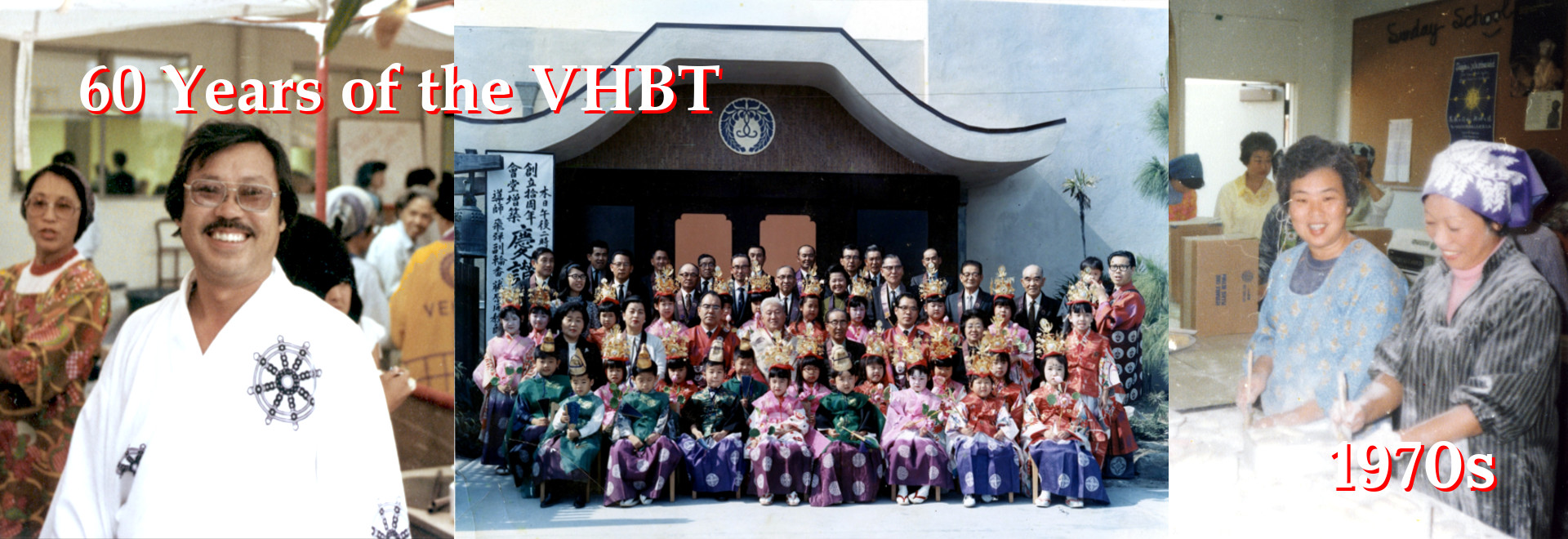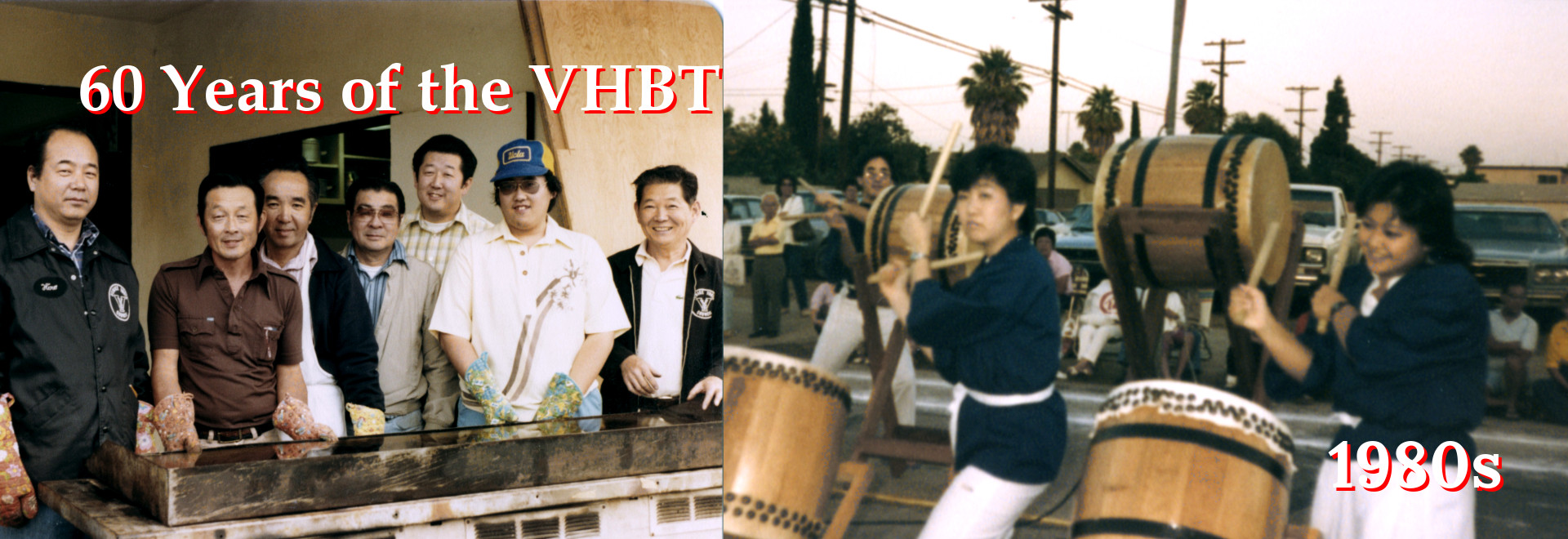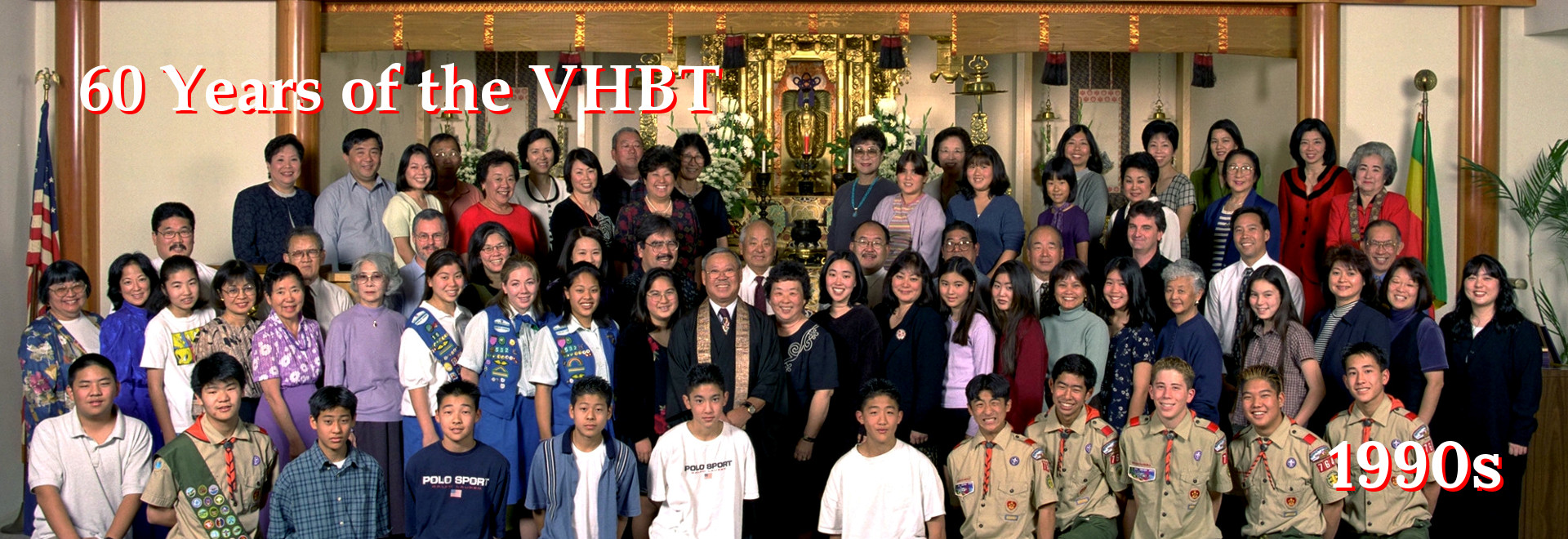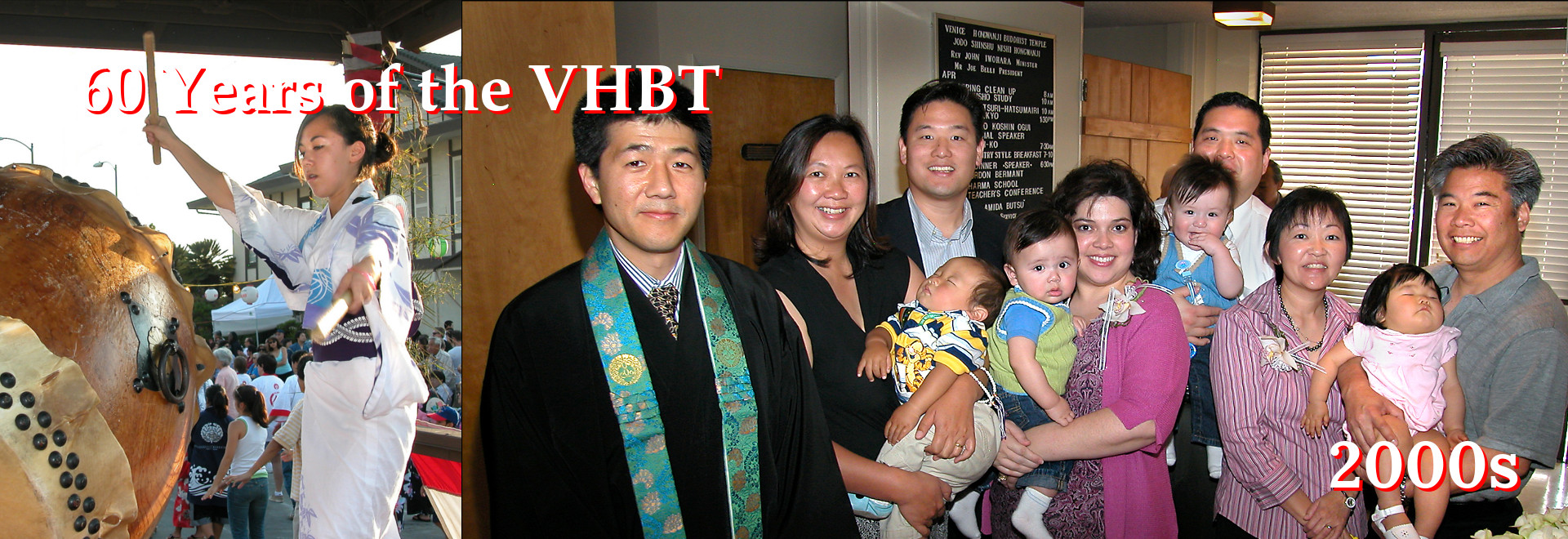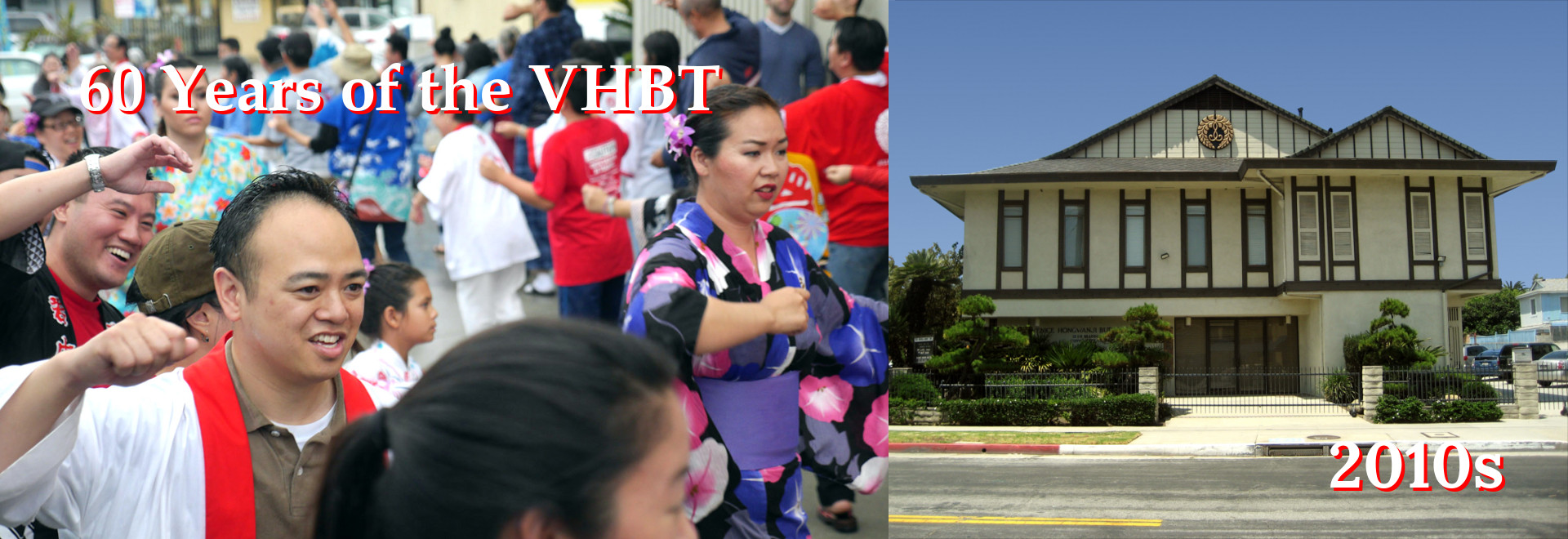Hello, Everyone! I hope you have had a relaxing summer season. I cannot express how proud and thankful I am for not only our temple, but also the community that we are a part of. Thank you to those that attended and represented our temple at the 2019 World Buddhist Women’s Convention. It was a wonderful experience. We were able to join the world-wide Jodo Shinshu Sangha. I hope those in attendance were able to make some lifelong connections with the potential to become multi-generational friendships.
With the end of the World Convention and the visitation of the GoMonshu , the Head Priest of our sect of Jodo Shinshu to our temple, it feels like the beginning of a new era. Next year we will be celebrating our 60th year. Let us all reaffirm ourselves as followers of the Nembutsu. Let us also think about the future of our path and the potential it holds for everyone. As I do this, I think of those that have come before us.
If there are persons who, having heard the Name of that Buddha, leap and dance with joy and say it even once, know that they receive the great benefit; that is, they acquire the unexcelled virtues.
http://shinranworks.com/commentaries/notes-on-once-calling-and-many-calling/
In this passage, we think about the essence of this life that we have received. This all stems from living this life of Nembutsu and saying the Name, Namo Amida Butsu. We tend to think about the receiving end of the passage, but let us think about Buddha’s compassion or how and why it has been given. This compassion is like the compassion the loving eyes of a parent may view us with. The difference between the Buddha’s eyes and a parent’s is that the Buddha sees us for who we truly are and then teaches us through the wisdom of truth. Let us think of about what the Buddha sees within us.
When we look at children, I hope that we can see in them many different versions of them. We may see the “happy” child, the “kind” child, the “angry” child, the “hungry” child… Now, do not take these versions as judgements, but as observations. In each of these, do you see the suffering child? That is what the eyes of a Buddha would see when the child is driven by self-centered desires.
A parent’s eyes look upon the child and may try to fulfill the worldly desires as best as possible, temporarily subduing our cravings. Buddhism teaches us that on the basic level that these desires and cravings are hindrances or obstacles to our true happiness. Because the Buddha sees us as who we are and not how we want to be perceived, the Universal Vow was made using Amida’s “unexcelled virtues” which is the wisdom to see the truth of all living beings and infinite compassion to take care of them. The “great benefit” that is received is the guarantee of the future life to come. Amida’s influence within each of us helps us to be honest with ourselves so that we may work with everyone for the betterment of all.
A tool that helps us through this process is our annual Eitaikyo Service. Eitaikyo means perpetual chanting of the sutras. What does this observance do for us? There are two parts to this. The first is that there is a fund that the temple has for rainy days or when it needs it. It should only be used for emergencies and then replenished when possible. We then have our service in November to honor those that have given to the fund.
The second part to this service is the true meaning for it. It is to make sure that the Nembutsu teaching will continue for future generations. When holding this service, I used to reflect on those that have given so much for us to live this life. I would think about their efforts and look closely within myself so that I could continue to walk in their footsteps striving to do my best with them as our role models. As part of the eternal the people that have given to this funds’ motives are clear. They want the sutra and the Buddha’s teachings to continue so that we can use them and find peace and joy in our everyday lives. They want us to live the best life possible. This is not a life of hard practice. It is not the life of hard work. It is a life of truth, acceptance, and reliance. By realizing this, we should constantly listen deeply and live in accordance with gratitude thereby settling our inner-selves.
As I get older, I cannot help to say I want to do my best to provide great wisdom and joy for others. The only way to do provide this is through the temple. As the Dharma is not mine and the Nembutsu is not mine, all I can do is to help others to help spread the Name, Namo Amida Butsu, so they can continue to receive Amida’s wish for the world. Which is for everyone to attain the Ultimate Peace.
Namo Amida ButsuRev. Kory Quon
Venice Hongwanji Buddhist Temple
September, 2019
